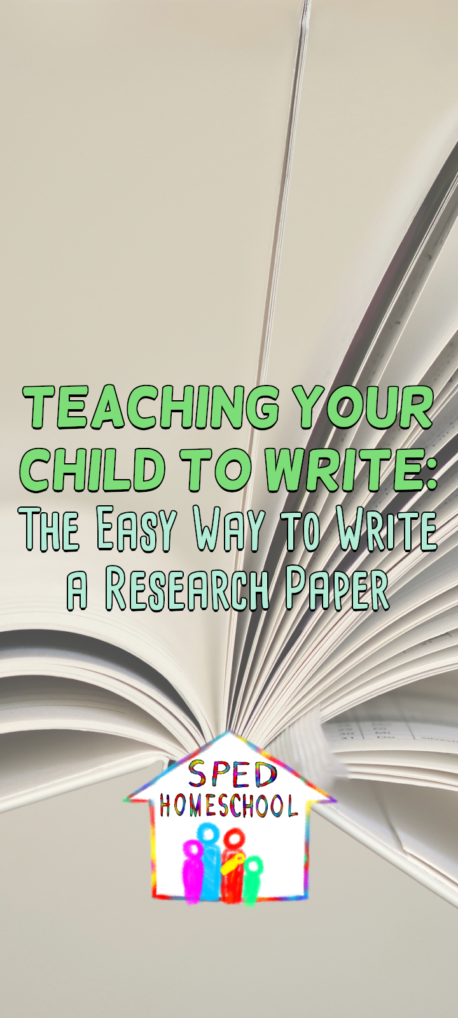
In this series on teaching your child to write we have covered pre-writing pointers, forming letters, putting letters together, and getting thoughts down on paper. In this final installment in the series, we will look at research paper writing in older students.
Writing a research paper can seem overwhelming to both the student and the teacher! Luckily, once you know the process, it is made much easier. Here is the easy way to write a research paper.
Research
In order to write a paper, you have to know about the subject matter. Help your child find reputable sources in books and magazines to help them learn about the subject matter. If you go to scholar.google.com or do an internet search to find peer-reviewed articles instead of general websites.
As your child researches, have him or her keep track of what they are reading, where they found it, and what they learned. Your child can even copy and paste into a research document rather than writing everything out. Generally, your child should pull from at least 5 different sources when writing a paper (more if it is a longer paper), which means your child should plan on reading from more than five sources.
Organize
As your child reads, discuss his or her thoughts about different aspects of the material. What does your child agree with or disagree with? Why? These are important parts of forming the thesis or basic premise of the paper.
Once your student has a good idea of what his or her topic is, have your child write down a one-sentence summary of the premise and why he or she thinks that way. This will be the thesis. The next step is to break down the paper into points that back up the thesis. Let me give you a basic example.
Let’s say I am writing a paper on how to classify cows in the animal kingdom. My thesis would be something like, “Based on the presence of hair growth, birth of live offspring, and the production of milk to feed infants, cows should be classified as mammals.”
I would take the points that support my thesis (in this case, hair growth, birth of live offspring, and production of milk) and make them each paragraphs in my paper. Your student should start organizing their notes into sections (or put them on index cards or post-it notes if you want a very visual way of organizing it all).
Write
Once you are organized, then writing should be easy. Introduction paragraph has a short overview of the paper and the thesis. Body paragraphs each have a point that supports the thesis along with resources to back up the claim. Then the conclusion states the thesis in a different way and makes any other conclusions.
You will also have to worry about citing sources and the list of sources at the end of the paper. The way that you do this will depend on which format you use (MLA and APA being the two most often used formats). You can, of course, buy manuals and resource guides, but my favorite resource is the Purdue Online Writing Lab which is free and will give you more in-depth help with all of these areas of writing a paper.
Writing a paper doesn’t have to be overwhelming. With the right process and the right resources, you can break it down into manageable tasks that don’t seem as hard.
Did you benefit from this article?
Would you consider a small donation to support the ongoing work of SPED Homeschool?
Click Here to Donate Today

